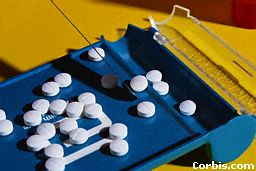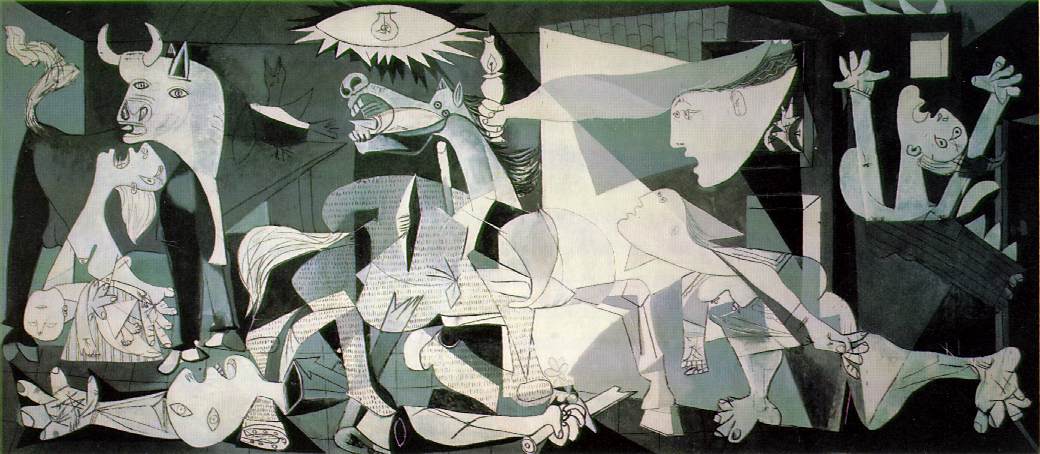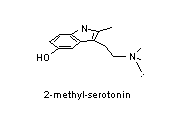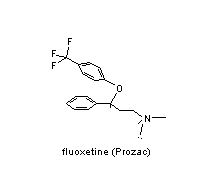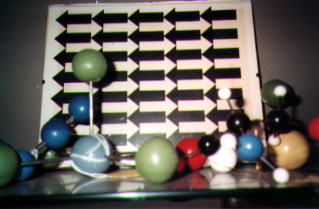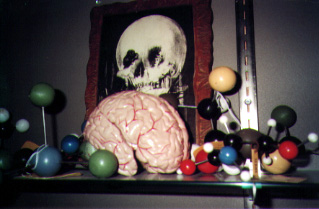|
Part 2:Section 2 |
|
|
Depression, Prozac, and Serotonin…again! |
|
| In the following section I present the current theories of how Prozac is thought to treat depression. I chose this drug as a topic of discussion for a number of reasons. First of all, Prozac is the most popular drug for the treatment of depression, anorexia, obsessive-compulsive disorder, etc. It has even been on the cover of Time magazine! It certainly deserved the spotlight. After all, doctors all over the country seen patient after patient come out of depression and get “happy” when on this drug. As applied to interpersonal relations, Prozac was able to make patients relate to others better and in some cases have meaningful relationships they once shunned from. And how is it thought to work? Serotonin again! Seems quite familiar to the explanation behind the effects of ecstasy. Once again lets explore its ins and outs. I hope that after a thorough consideration we can come up with deeper understanding of its effects and relation to the broader picture involving the nature of interpersonal relations. | |
| I will start out by pointing out our current awareness of the state of depression, the medium of Prozac’s operation. Also, I will present some of the contradicting issues which arise from implications of what we know and what we do not know about the state of depression and the medium of its conduction - the nervous system. | |
| By this time we will have two systems
in which on the one side we have chemicals at work but on the other there
is something else that contradicts the chemical model. So what is that
something else? We will start to get a clue into this in the section
on Prozac, Empathy,
and Brain Systems
. In this section I expand what we learned so far about nature
of interpersonal relationships that expands the theory of chemical effects
examined in Part
1
. |
|
|
THE STATE OF DEPRESSION |
|
|
Guernica by Pablo Picasso |
|
| Throughout history, depression was thought of simply as a flawed character condition. Fifty years ago, pharmaceutical treatmentsfor depression did not exist. A major breakthrough occurred in 1974, when a study by scientists at Eli Lilly and Company concluded that a cause of depression is a chemical imbalance manifested by a malfunctioning serotogenic system. Many researchers and doctors asserted: “depression is not a moral weakness, nor mental sloth, but a true brain disease that can be successfully treated.” | |
|
Photo by Rachel Berman |
|
| Before accessing the condition, it is important to define some of the major symptoms that together make up what doctors refer to as depression. The physiological symptoms include “feeling sad or anxious most of the day, every day, losing interest in activities you once enjoyed, feeling worthless, guilty, or hopeless, feeling irritable or restless all the time, having trouble concentrating, making decisions, or remembering, having hallucinations (false perceptions) or delusions (false beliefs), and finally, having repeated thoughts of suicide or death or actually making a suicide plan or attempt”. | |
| The physical symptoms include: “sleeping too much or too little or waking too early, feeling drained of energy or physically slowed down, feeling tired or weak all the time, losing weight (when not dieting) or gaining weight, having headaches, digestive disorders, or chronic pain that doesn't respond to medical treatment.” There is much more, but this gives a general idea of a depressed person’s mental and physical state and points to the fact that depression is “a whole body disease.” | |
| According to the latest hypothesis, depression is caused by a low level of a neurotransmitter serotonin in specific areas of the brain. Although this explanation is the current fad of science there has been more research done in this area than in the case of ecstasy. I think there is better evidence for the connection between serotonin level and depression. | |
|
SEROTONIN AND DEPRESSION |
|
| The connection between depression and serotonin level in the brain was noticed when patients taking a drug Reserpine for hypertension, began to experience symptoms of depression. One of the effects of Reserpine is, in fact, a release of serotonin from pre-synaptic stores. This impairs the serotogenic communication pathway. Also many clinical studies on the spinal fluid which bathes the brain tissue of persons who died with depression, in some cases after suicide, support that serotonin’s function in the brains of depressed individuals is impaired or reduced. | |
|
WHAT DOES CHEMISTRY SAY? |
|
|
Courtesy of Pharcentral.com |
|
| The empirical formula of Prozac is C17H18F 3NOHCl. The presence of trifluoromethyl substituent (F3 ) seems to contribute to the drug’s high selectivity and thus its ability to inhibit the re-uptake of serotonin. A major mechanism for inactivating serotonin in the brain is its re-uptake by the neuron which released it. Prozac, acts by preventing the re-uptake of serotonin into the nerve terminals. It is thought to accomplish this by actually binding to receptors in the pre synaptic cell, thus blocking the re-uptake of the neurotransmitter. The reason for this is its specificity, it seems to have the right “shape” for fitting into these receptors. By inhibiting the re-uptake process, Prozac enhances the action of serotonin. Same as the case of the explanation for ecstasy. | |
|
ANY CONTRADICTIONS? |
|
|
Photo by Rachel Berman |
|
| First of all, antidepressants do not work in all of the patients. From the depression hypothesis it would follow that as long as proper levels of serotonin are restored, symptoms of depression should cease. An important fact one must consider is that there are much more factors and interactions that occur in the nervous system. There are many other neurotransmitters that depression is associated with, some that we likely do not even know about. But at least two others are associated with depression- epinephrine and norepinephrine . However, Prozac’s effect on these is not known. So the fact that all chemicals can not be accounted for could explain why some people are not “treated by antidepressants.” | |
| Another area of contradiction lies in the side effects of antidepressants like Prozac. The most interesting of these are anxiety, nervousness, and insomnia. These are the symptoms that Prozac is supposed to treat! In one study, anxiety was reported in 14% of patients taking Prozac and only 7% of patients that were treated with placebo. Thoughts of suicide were also reported as a side effect of the drug and many suicidal patients claimed that their drive increased upon taking Prozac! Various implications could be drawn from this. If a substance which is supposed to treat anxiety is in fact causing it in some patients, then perhaps there is more to anxiety and other aspects of depression than a mere problem with the serotogenic system. | |
| Also, it is interesting to note that a person taking Selective Serotonin Receptor Inhibitors shows improvements in his/her state onlyafter several weeks of treatment. This aspect can be attributed to the possible existence of an alternate, or perhaps a different regulatory mechanism that controls serotogenic transmission. If this was not the case, one would expect that as soon as the inhibiting substance is in the system, it will do its thing and serotonin levels will be restored if not immediately, within a few days for sure. But this is obviously not the case. These are the types of glitches doctors are often hesitant to contemplate. They are mostly concerned with alleviating the disease in majority of their patients, which seems to be working.... for whatever reason. | |
|
It has been mentioned that “serotogenic antidepressants may be particularly
useful to some consumers with a character disorder along with depression.
Such serotogenic antidepressants may also be particularly useful in
some consumers with headaches, and some consumers with obsessive compulsive
disorder.” This is a rather humorous way to say that the operation of
these drugs and their effects on various behaviors and physical symptoms
is by no means precisely known. While progress was made, scientists are
nowhere near understanding the workings of the brain. |
|
|
SO WHAT NOW? |
|
|
Photo by Rachel Berman |
|
| As we already seen in the case of ecstasy, there are contradiction to the theory which views the self as “the aggregate of atoms.” In both cases we seen that there are the chemicals on the one hand and then there is evidence that something else is going on, otherwise we would not have all the problems with the chemical models of these two systems. So what could that something else be? The next section in which I examine Kramer’s hypothesis might give us a clue in the right direction. | |
| LINKS for Depression and Prozac | |
|
Mental Health
Net Team Projects
on www for Biological Basis of Behavior -1998 The Harvard
Mahoney Neuroscience Institute Letter Depression Health Center:
Depression -Biological Cause Team Projects
on www for Biological Basis of Behavior -1998 Medical Sciences
Bulletin Antidepressants |
|
